Slowly, gently, night unfurls the splendor of the recently preserved Phantom Furnace Columns, 2002 by public artist Andrew Liecester. The artwork Phantom Furnace Columns serve as a metaphor for the blast furnaces that once stood in the mills of Youngstown, Ohio which once had a booming industrial past.
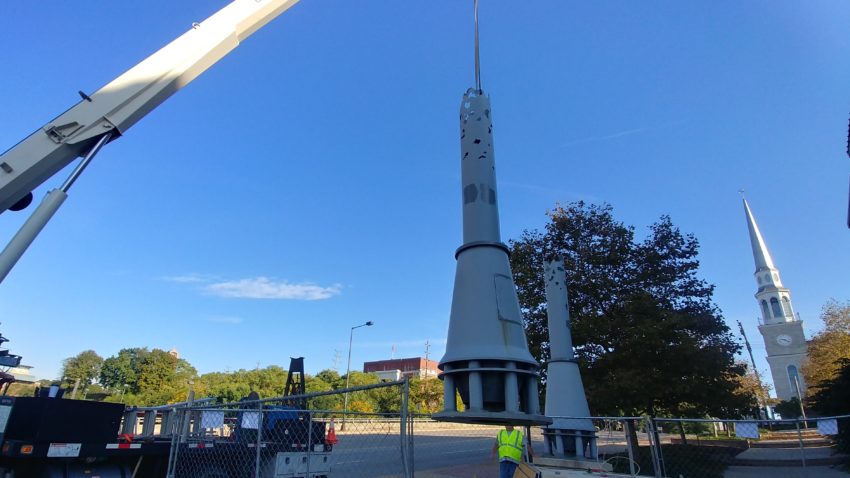
The furnace-like elements of the sculpture appear as vertical dark columns flanking the north entrance of the Nathaniel R. Johns U.S. Courthouse. Each column is composed of two individual pieces including a base and the stack. The base is made of cast and milled steel components welded together, and the stack is rolled sheet steel with laser cut shapes.
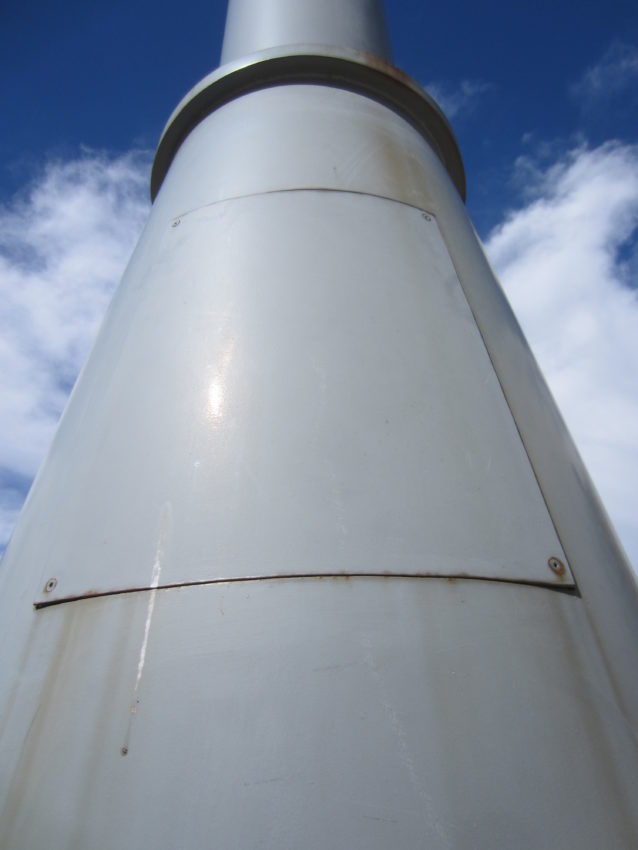
At night, these columns “ignite” with a blue light facing upwards to illuminate the stack, and an orange light that illuminates the base, or at least, they once did. In time, the paint layers failed, restoration campaigns changed the look of the artwork, and the original lights were no longer functioning. The sculpture was in need of conservation treatment.
The assessment was conducted and treatment plan was developed by Robert G. Lodge, Conservator of Modern Art and the president of McKay Lodge Conservation Laboratory. For treatment, the artwork had to be removed from its current location. Both columns were unbolted then removed by crane and loaded onto our flatbed truck for transport to the McKay Lodge Conservation Laboratory facilities in Oberlin, Ohio.
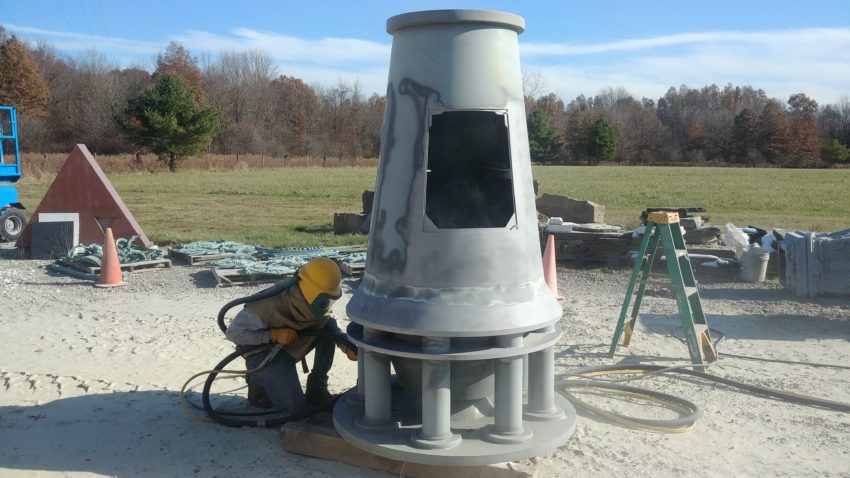
At the lab, Emmett Lodge, NACE Certified Coatings Inspector and experienced coatings applicator, treated the sculpture. Electrical connections were disconnected prior to treatment and documented. The gloss and color of the original paint was matched, the paint layer was removed with abrasive media blasting so that it was free of failing paint, corrosion, and grease. Then the sculpture was primed and recoated.
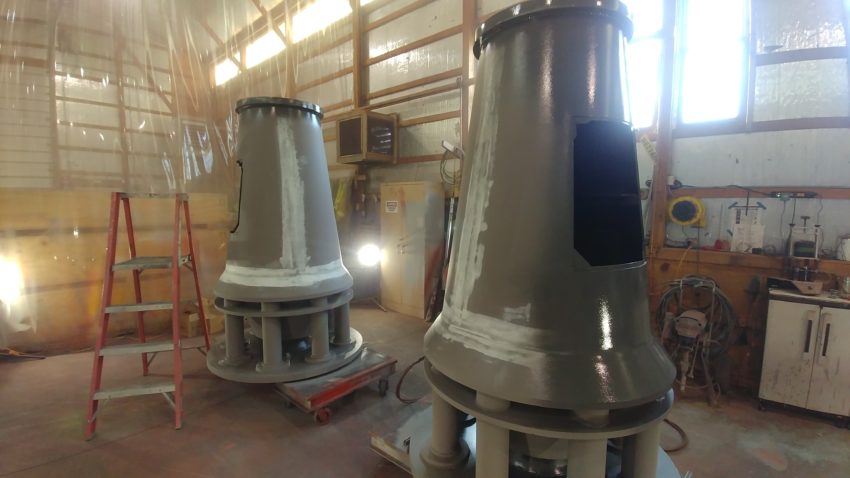
The sculpture was loaded onto our flatbed truck and returned to the courthouse for reinstallation by crane. Prior to installation, the existing mounting bolts in the concrete bases were cleaned and coated with commercially available anti-seize lubricating compound.
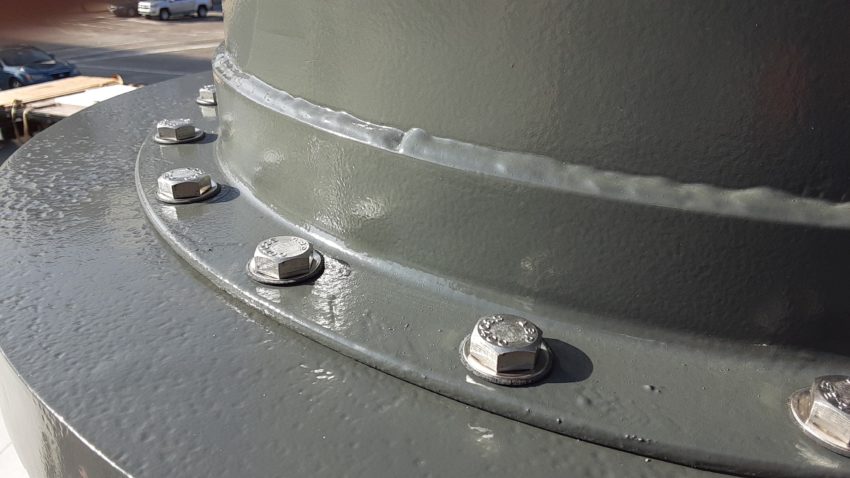
New stainless-steel fasteners were also installed. The bolts attaching the upper sections to the lower sections were installed with neoprene washers to prevent water intrusion into the mounting flange which was previously an area of significant corrosion.
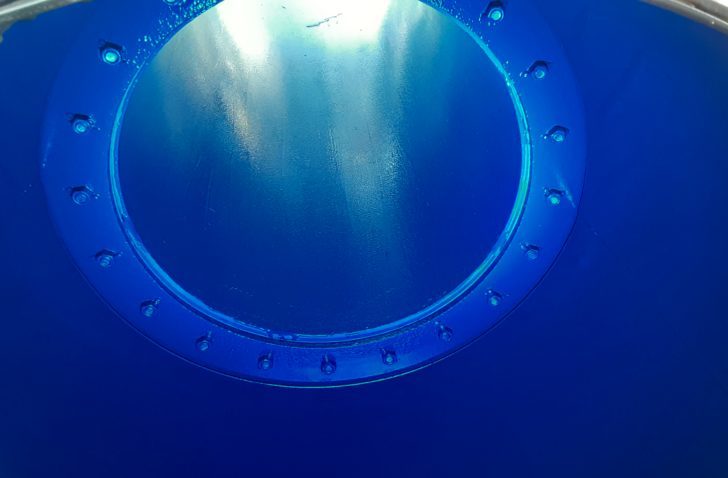
The sculpture received new LED lighting which matched the original lighting components’ colors but used less energy and have a greater service life. Two upward facing blue, and two downward facing amber lights were used.
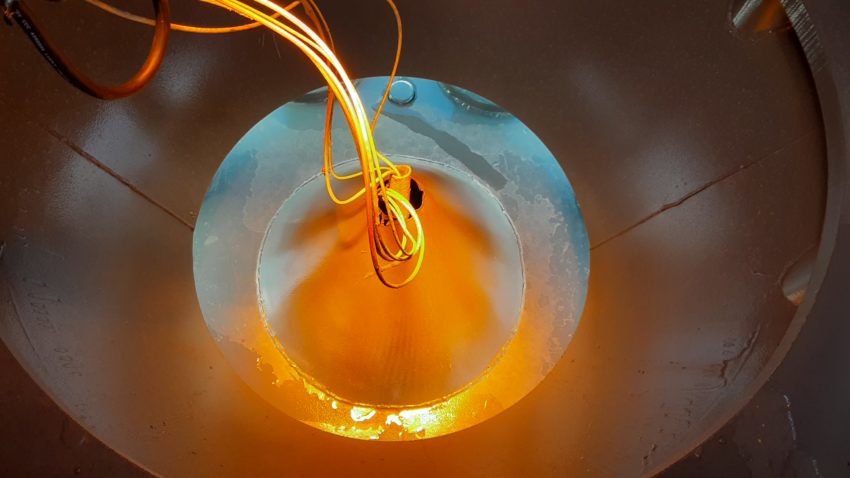
The new lamps received a new mounting system which permits easier removal for maintenance. All lamp hardware is galvanized steel, and the lamp housings are now powder-coated aluminum. The lamps were tested and positioned to recreate the original appearance as much as possible.
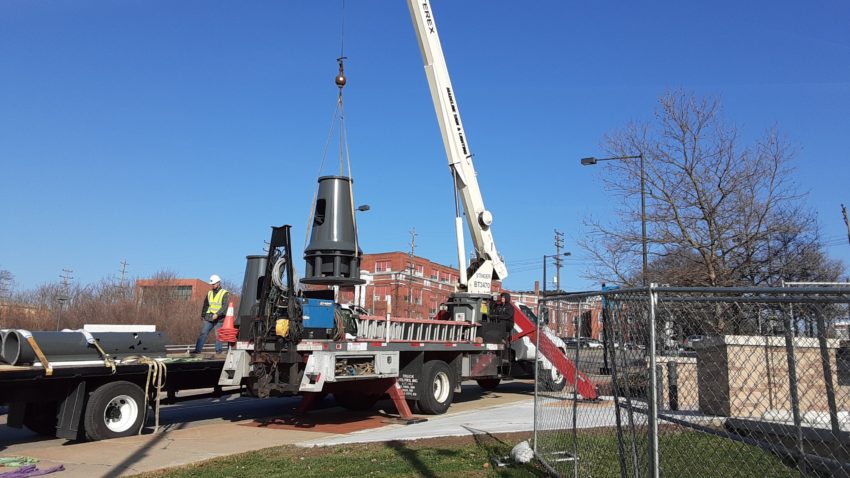
The real test, however, was viewing the sculpture at night after treatment.

The artist Andrew Leicester immigrated from England to the United States in 1970. Leicester works in a variety of scale for his outdoor works which are installed in the United Kingdom, Australia, and throughout the United States of America. His works involve the history and essence of the local environments of the communities in which they reside. His current work addresses issues of sustainability and can be viewed on his official website.
